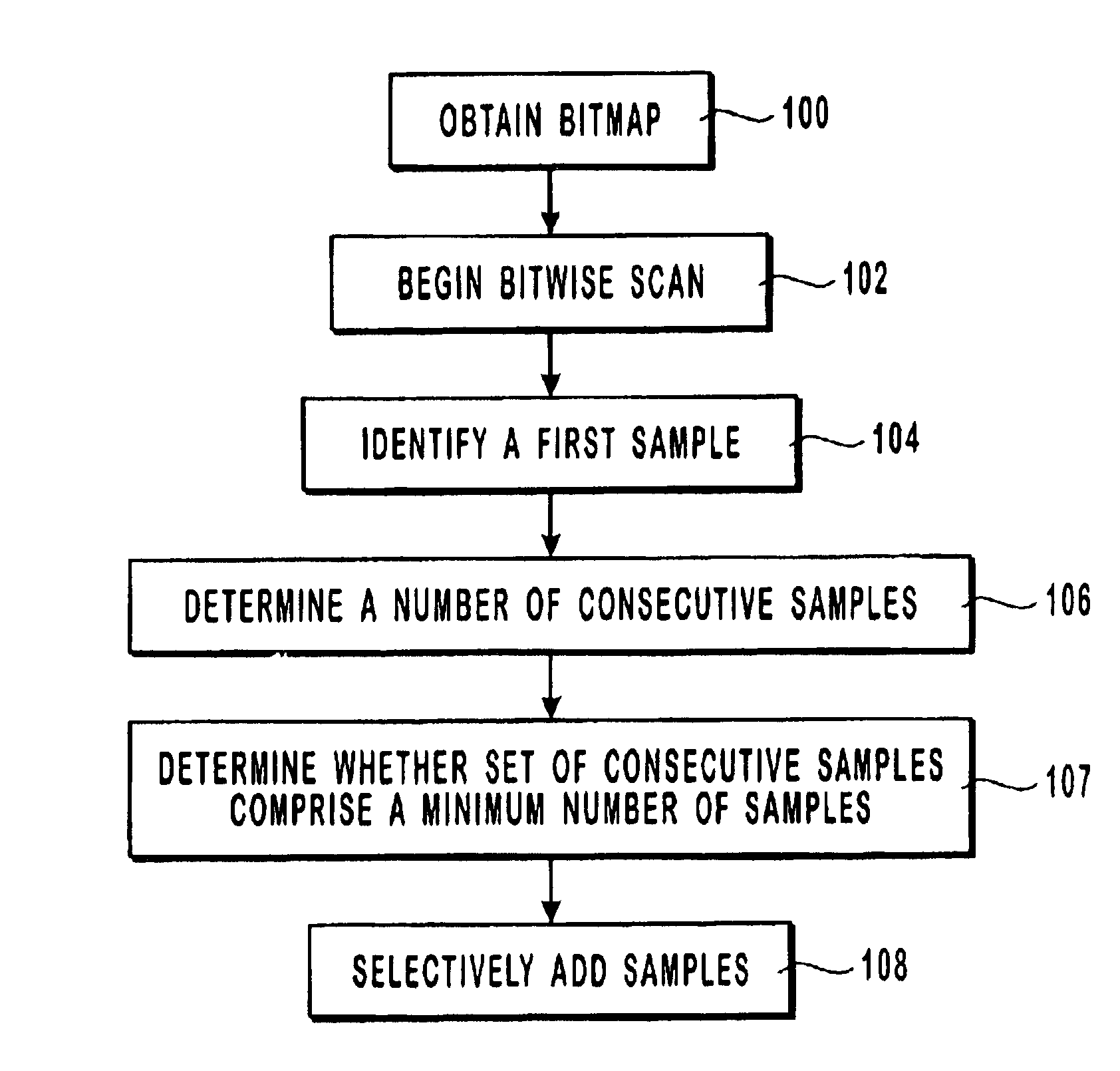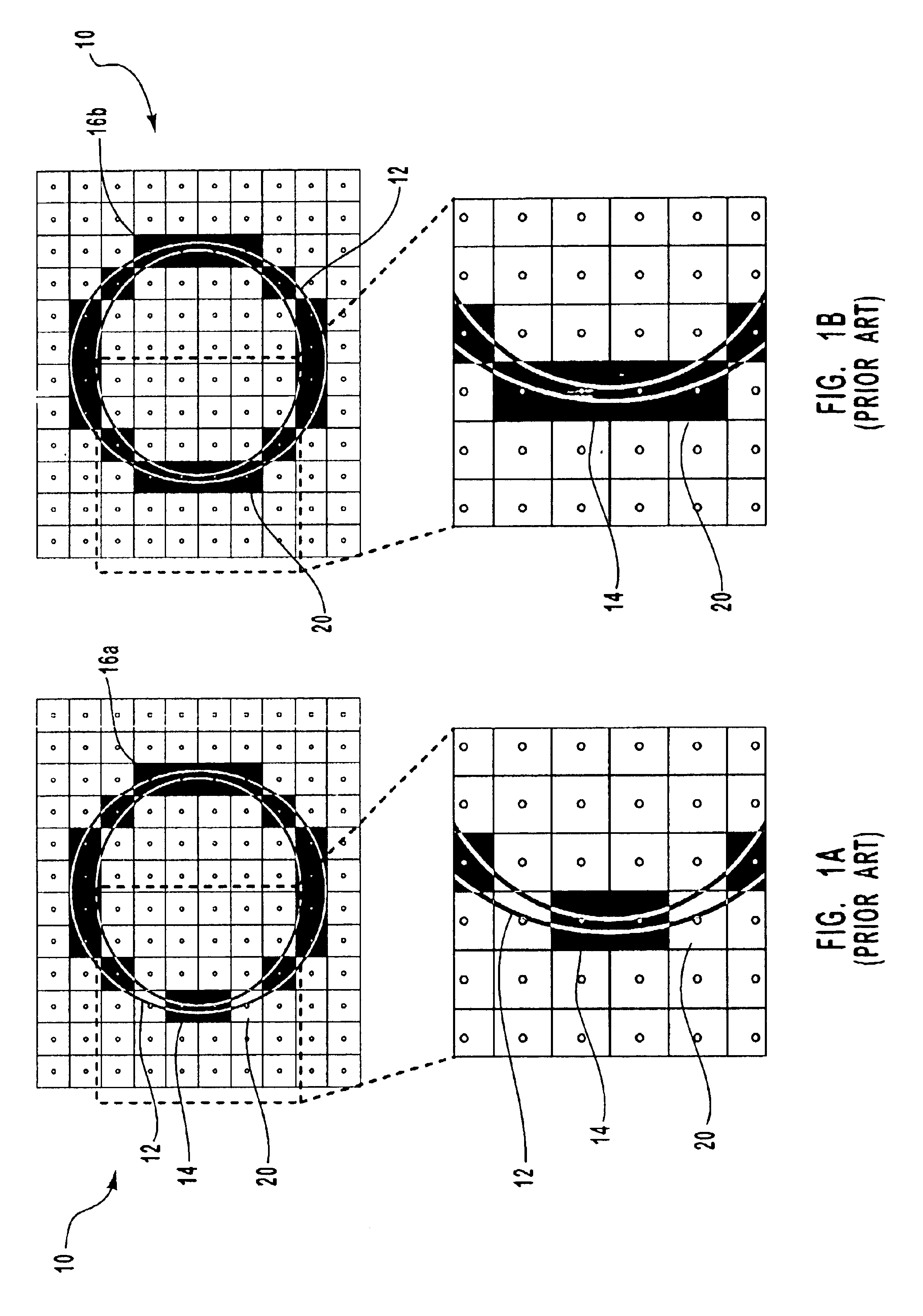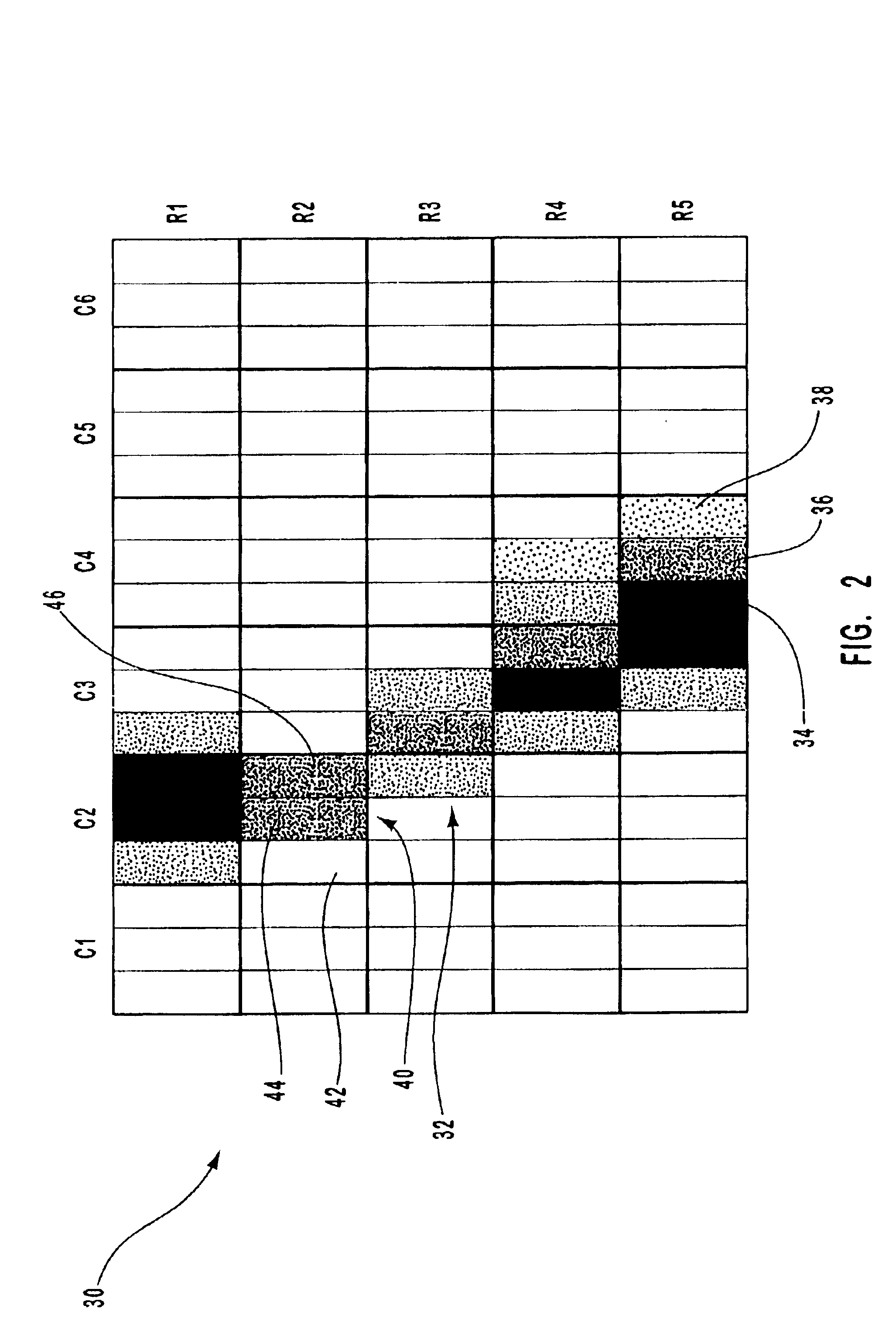Dropout control in subpixel rendering
a dropout control and subpixel technology, applied in the field of dropout control, can solve the problems of sampling error distortion, sampling error distortion, breakage at a point in a character or other object that the viewer would expect to be continuous, etc., to facilitate the vertical dropout control operation, reduce artifacts, and facilitate the effect of dropout control operations
- Summary
- Abstract
- Description
- Claims
- Application Information
AI Technical Summary
Benefits of technology
Problems solved by technology
Method used
Image
Examples
Embodiment Construction
[0032]The present invention extends to both methods and systems for dropout control to compensate for thin stems of an image in which one or more samples corresponding to pixel sub-components are added to one or more consecutively spaced samples. The samples added to the one or more consecutively spaced samples are used in sub-pixel rendering to compensate for overly thin and / or faint object stems of an image. An image can comprise a text character or any other type of graphics object that can benefit from dropout control.
1. Dropout in Subpixel Rendering
[0033]FIGS. 3A through 3D illustrate how sampling routines utilized in sub-pixel rendering can lead to unnaturally thin stems and the method in which dropout control operations are utilized to detect dropout conditions according to one embodiment of the present invention. FIG. 3A illustrates an image 50a that is to be displayed on a display device. In this example, image 50a comprises the character “m”. The rendering routines that ar...
PUM
 Login to View More
Login to View More Abstract
Description
Claims
Application Information
 Login to View More
Login to View More - R&D
- Intellectual Property
- Life Sciences
- Materials
- Tech Scout
- Unparalleled Data Quality
- Higher Quality Content
- 60% Fewer Hallucinations
Browse by: Latest US Patents, China's latest patents, Technical Efficacy Thesaurus, Application Domain, Technology Topic, Popular Technical Reports.
© 2025 PatSnap. All rights reserved.Legal|Privacy policy|Modern Slavery Act Transparency Statement|Sitemap|About US| Contact US: help@patsnap.com



